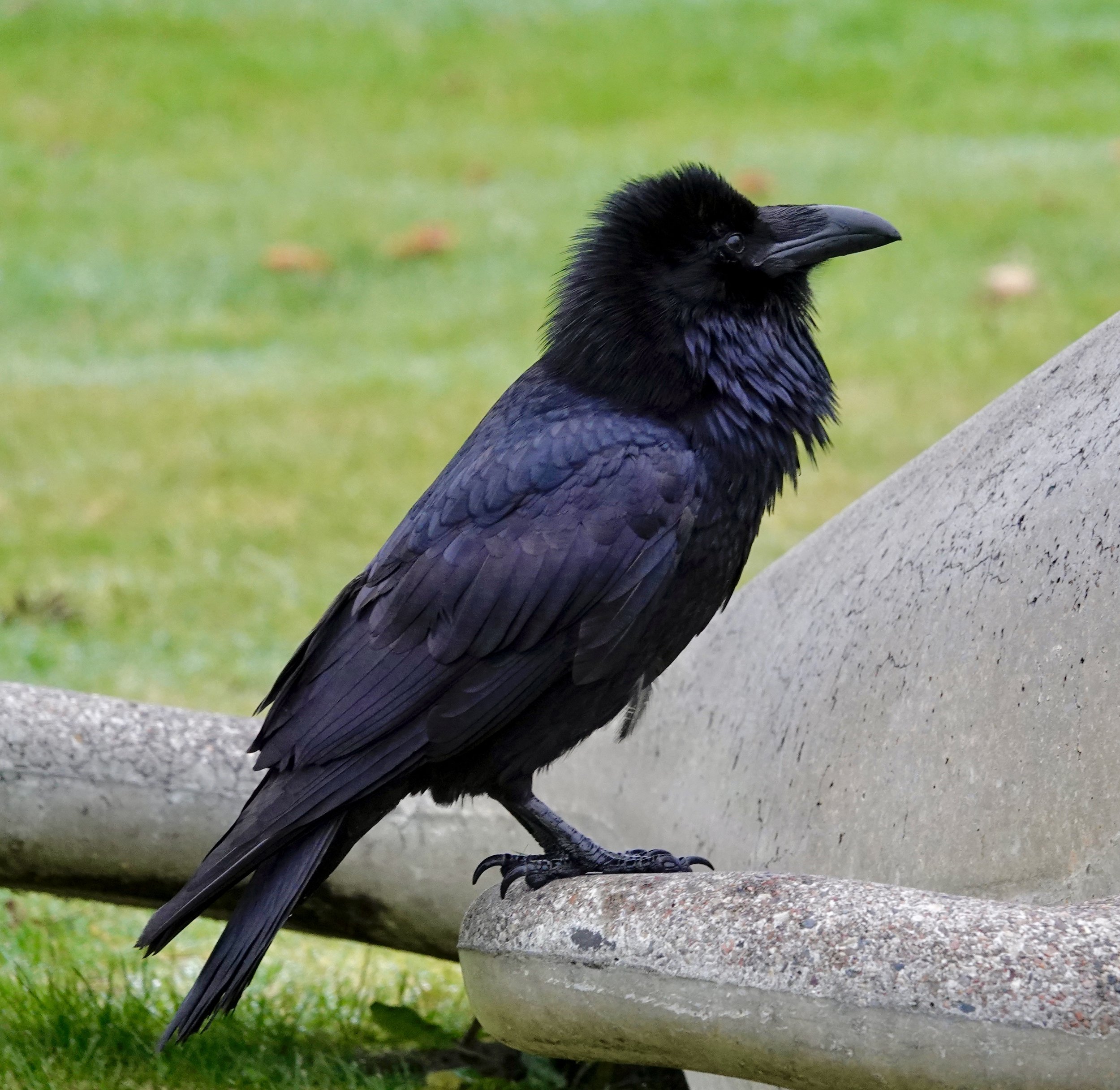Naturally
I put out some peanuts in the shell for the birds. The blue jays weigh the peanuts by picking them up as if they are miniature barbells and, after some consideration, take the heaviest ones first because there is more food in those. My wife says blue jays are just a bit smarter than I am. She’s not giving them enough credit. They are more than a bit smarter. I imagine a blue jay looks at those peanuts and says to itself, “Wow! I’m rich.”
A reader from Connecticut places peanuts in plain sight scattered around her yard. Then she watches how quickly the blue jays find the goobers. Jays notice anything different in their world—that’s how they survive.
I examined a rotting stump, evidence of a tree gone by. Crows squawked a lot, just as people squawk a lot. The crows kept their eyes on me. It’s part of their job description. They’ve learned that humans are always up to something.
A turkey hen preens on our deck. An adult turkey has 5,000 to 6,000 feathers and she appeared intent on sprucing up every feather her bill could reach. She sorts through her feathers as if she might have been counting them. You can tell a female turkey’s poop from a male’s. That’s a handy skill to have and will astound your family when you share this bit of knowledge at next year’s Thanksgiving meal. Take that Aunt Agatha, who claims to have once shaken hands with Ross Perot and reminds everyone of that at every opportunity. The female scat is clumpier, rounder, potentially curly or spiraled and green-brown with white uric acid on the surface. The male scat, both from the jake and the tom, is long, narrow and straight, sometimes with a J-shape at the curved end. The larger the diameter, the older the bird. The hen keeping me company has no beard. Turkey beards start growing when poults are five months old and keep growing throughout their lives. They are permanent and not replaced during molts. The older the male, the longer the beard. Turkeys can lose their beards when a vitamin deficiency results in their beards being sheared off, snapping off from the weight of snow and ice that collects or fraying from being dragged on the ground. Some toms grow more than one beard. The National Turkey Wildlife Federation found one tom had 13 beards. The longest beard was on a turkey in Texas and was 22.5 inches long. That turkey played a guitar with the band ZZ Top. A less prominent version of the beard occurs on about 10% to 20% of females.
An unmitigated gull stole my hot dog and laughed
I spoke at a thing in Florida. I call it work; my family and friends call it bloviating. I was out on the beach because there was a beach there that was hard to avoid. It was a shore thing. I lacked a laser pointer, so I used my hot dog as a pointer, as any sane man would do when pointing out a bird. A gull took that as an invitation to have a bite. It snagged it from my hand but struggled to carry it away, even though I had taken a bite, dropping the tasty morsel, mustard and all, which was greedily consumed by its bickering followers, who numbered more than those of Elon Musk. A kerfuffle or maybe a hullabaloo ensued. The gulls laughed at my unwanted dietary restriction. They laughed because they were laughing gulls. I didn’t ask, but I doubt the hot dog vendor offered refunds on pilfered frankfurters and who carries insurance for that sort of thing?
Q&A
“Where do Canada jays hide the food they steal from me when I’m camping?” The Canada jay is also called the camp robber, whiskey jack or gray jay. This bird has eyes that seldom miss food. A friend told me of a Canada jay swiping a strip of bacon from a frying pan. “Whiskey jack” doesn’t derive from tales about these birds highjacking Al Capone’s trucks hauling whiskey to a speakeasy. It comes from the Cree (and other Algonquian languages) name for the bird, which was Wisakedjak. Wisakedjak was a sacred figure known as a trickster. The gregarious Canada jays hide food in conifer needles and cram it into the nooks and crannies of tree bark, using their sticky saliva to roll bits of food into gooey packages like ABC (Already Been Chewed) gum on the bottom of a student’s desk. Tree sap might be an aid. Like other jays that cache food for their winter’s larder, Canada jays have terrific visual memories and are able to find hidden morsels months later.
Thanks for stopping by
“Perhaps one day we will kneel down and ask the animals for forgiveness.”—Dalai Lama.
"If you truly love nature, you will find beauty everywhere."—Laura Ingalls Wilder.
Do good.
©️Al Batt 2023
Crow or raven? Check a range map. Crows caw, while ravens have a deeper, throatier croak or gronk. Ravens have thicker bills and shaggy necks. A crow’s tail is fan-shaped in flight and a raven’s is wedge- or diamond-shaped. Ravens soar, crows flap. A crow is about 2/3 the size of a raven, which is the size of a red-tailed hawk. Crows are more common in urban areas where a big crow is typically a big crow. Common raven photo by Al Batt.

